Praise For: Scoliosis Ancillary Adjusting Protocols and Home Care
Hear directly from our students about the benefits of our program.-
Hailey Burpo, DC
“My three takeaways from the program are:
1. That there is rotational scoliosis, inferior tippage, and compensatory.
2. That using a roll placed underneath the pelvis will open up T11-T12 to adjust P-A.
3. Exercises to do at home for scoliosis.I feel as if I can treat scoliosis patients with more confidence and give them more things to do at home to improve their curves.
I have been using the roll more with patients under the pelvis to open up t11 or t12 depending on which has inferior tippage and which is more tender.
I recommend this program. It’s a great refresher course at the beginning and it gives great detail into blocking protocols and exercises that I have not learned before.
Thank you for all that you and Nancy do for our profession.”
-
Kristen Denette, DC
“This program gave me great strategies to analyze and help correct a scoliosis. It also gave great home care procedures to assign patients!
It made me more confident in treating my patients with this condition. Had a patient with rotational scoliosis come in the same week the course began. I was able to put into practice the methods learned in this course right away!
I would recommend this course for anyone wanting to enhance their analyzing and adjusting skills!
Thank you!”
-

Lilian Aliberti, DC
“It’s always amazing to learn from this couple. I love teaching, always being willing to answer any questions and for adding so much to my practice.
Learning from this couple makes me increasingly want to transform lives and shows me the best way to do this with my patients.
I have a patient with a very severe degree of scoliosis; she wore a brace 23 hours a day, felt a lot of pain and was bullied at school. After I started applying what I learned in this course, she improved a lot! She no longer feels pain, breathes better, sleeps better and now only wears the brace for 4 hours outside of school. Her friends now play with her more and she is very happy.
I always recommend all of Martin and Nancy’s courses! They transform my practice and my life and for this reason, I always take all online and in-person courses. In my opinion, they are the best in the world!
Thank you for everything! You are my mentors and following your teachings helps me to be better for my patients and become a better person. You are my inspiration. God bless your lives immensely!”
-

Celeste Mattia-Cattie, DC
“My three takeaways are:
1. Information is there to review and view in your time schedule.
2. New ways to analysis scoliosis and varieties of ways to adjust.
3. Home exercises to give patient.After using this technique on my 82 year old patient, it relieved the pain in her feet and she sent me a video of her in heels dancing with her son, she has not been able to wear heels since 2004 – the wonders of Chiropractic. We both were thrilled, and I am so thankful to have been able to take this course.
I would recommend the course to others because it specifically identifies the scoliosis and different ways to adjust the spine, the home exercises are a bonus to you and your patients – great results.
Thank you, my eyes are open to a different way of handling scoliosis, now I can bring my practice to a higher level. My results have been nothing short of a chiropractic miracle – to date all the courses I have taken have given me the chance to better serve my patients and receive spectacular results in using these techniques.”
-
Angela Taylor, DC
“My three takeaways for this program:
1. This is a great refresher on scoliosis.
2. I have a much better understanding of scoliosis blocking techniques from this program.
3. The home exercises for scoliosis patients was very helpful and provided easy home care and relief for these patients.This was a great refresher on scoliosis and I learned some new things especially on inferior tippage. The home exercise techniques have been a great addition to my scoliosis patients.
Yes, I would recommend this course. It’s a great short course that had some great info for an area that I think many chiropractors don’t actually know that much about.
Every class I take with you I learn something new and am always able to immediately apply it to my daily practice.”
The SOT® Pediatric Certificate Program
Demonstrate your commitment to your profession and patients, enhance your skills, and place yourself on the road to mastery in the art of chiropractic adjustment.

